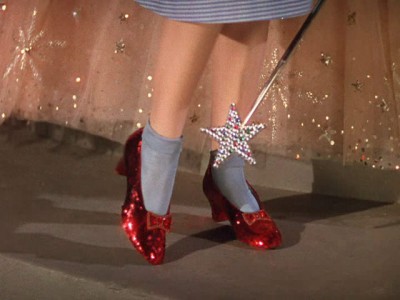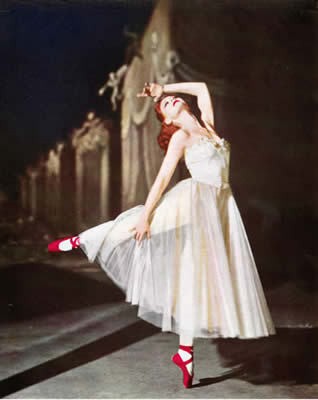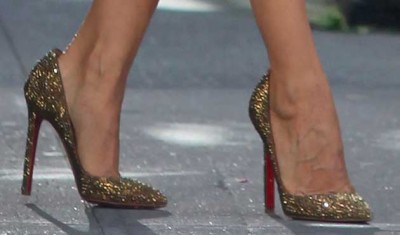Towards A New Understanding Of Adulthood

Science, tell me how the next generation is doing.
If you’re a young adult, chances are high blood pressure isn’t high on your list of things to worry about. But a new study by researchers at the University of North Carolina at Chapel Hill suggests maybe it should be. They found that nearly one in five young adults between the ages of 24 and 32 has high blood pressure, also referred to as hypertension.
Okay, well, I can’t exactly claim to be surprised by this, what with our sedentary lifestyles and the amount of processed crap we cram into our gullets as we sit, dull-eyed, in the reflected glare of one screen or another. But BACK THE FUCK UP FOR A SECOND? “[Y]oung adults between the ages of 24 and 32”? Really? Is that how we’re defining it now? Because, WOO HOO, I guess that just makes me “an adult.” We’re totally going to take this “40 is the new 30” bullshit as far as we can, aren’t we? Fine by me! As an adult — and one on the younger end of that definition — I feel entirely comfortable with that. Also, you kids should eat less salt, it’s not good for your blood pressure.
Photo by Tom Raftery, from Flickr.
Lessons in Knowing and Not Knowing, With Novak Djokovic

Q: I know that you don’t want to speak about your new diet regime….
A: Exactly
Q: But why, why don’t you want to speak?
A: There are some things I can speak about; there some things I can’t.
Q: No other reasons?
A: I can tell you who is my girlfriend, but I cannot tell you what I do with my girlfriend.
Novak Djokovic, gluten-free sphinx of mystery, now on game 41 of his winning streak (due to a retirement). Up next against him at the French Open: saucy Argentine Juan Martin del Potro. (via)
The Cure for Writer's Block

I’m all ready to make this week’s Mr. Wrong column, but sometimes I can’t remember what I want to column about, you know? I mean, c’mon, I always have some sorta Topic, and no, I do not sympathise with any of this “Writer’s Block” stuff people whine about, like that article I looked at in The New Yorker about the guy who helped big-time Entertainment people get through their Writerering Block, har!
At least that’s what I think it was about, the article, I mighta not completely absorbed it, on account of I have Reader’s Block, seriously, I mean, I don’t move my lips or anything like that when I read (except in connection with enjoying snacks so I guess I totally and constantly move my lips when I read, urp!), and I’m pretty good at sounding out any novel Big Words inside my head, but I have to read stuff a few times usually, especially if I am Thinking while I read it, because then I just start Thinking about Thoughts and my eyeballs continue to look at the shapes of the letters and the way they are grouped into bigger shapes and then the way those are separated by little marks and so my eyeballs are perfectly happy to just cruise right along like this time where I got all caught up trying to remember the Significance of some Ancient artwork where They (the Ancients) would depict, like, the Deity/Rulers or whatever they were supposed to be as much larger than the ones who were getting Ruled, and that’s because in the artwork for this thing, about the guy who has all this psychology for how to Unblock, the guy was drawn as being like a giant compared to the person who was In Need of Guidance, so I sailed through major chunks of the article thinking about those Egyptian deals, friezes? Bas-reliefs?
Whatever, that’s another key to not having Writers Block, I think, is you don’t ever have to stop and figure anything out, you know? And you are all hung up on having to have an Outline? Fine, start making the Outline, out of words, and just keep going, you know? What are you, trying to be Economical with all those letters you are touching out on your iPodpad or whatever? That shit’s free, man, just concentrate on spewing out another coupla thousand of ’em and there’ll be something in there to work with, trust me, you don’t have to stop anytime soon to look at it or read it (blergh) or fix your punctuationals, jeez, just stack up some words and then later you can go back and see if any of it makes sense, see?
I could totally set myself up as one of these quacks who tells people their whole problem with why they are not Awesome (yet), like they are Supposed To Be¹, is buried deep Within their psyches or whatever, because of course it’s true, where the hell else are all your goddamn Writer-Block problems, hah? Of course you are The Enemy! Write me an Essay on Why You Can’t Write and I bet you would be able to go nuts with that shit, right? Unless you are lazy or on drugs (or have a similar legitimate Medical Excuse such as ti many martoonies), you have only your own brain to blame for these Problems, and only your own cute li’l brain can fix them. I think that is also Dianetics, but I am afraid to read that book and I am also afraid of the Scientologists, so please do not attack me, Scientologists, I am not making fun of your Beliefs or anything like that, I am just Afraid of you. I mean, that religion has gotta work if John Travolta has his own Boeing 747 that he knows how to fly? No offense, but that is some Science Fiction, man, and I’m not too proud to say I have a primitive Fear-Response to all that next-level Achievement, you know? Anyway, back to you and your so-called Writing Blockade. Do you ever have Writing Blocks when you are making a list of groceries, or when you are writing to Santa? Of course not! One Ingredient leads to another, one Selfish Demand inspires thousands and that’s exactly how you write.
So look, I was gonna write my column about something and I couldn’t remember what, so I have these Notes where I write down Ideas. Now I am looking at my notes, Jesus H. Christ, what a bunch of garbage, but like, kabillions of words, man. It’s just like panning for gold, seriously, I am not sweet on myself like it sounds right now, but with all the Notes I got stashed away, I don’t ever have to think up another idea ever again, and neither should you, if you have a Brain.
Ants. I was gonna write about how I have ants in my house every Springtime, and the way I usually deal with it is I go to the hardware store and but this shit called TERRO, which is straight-up Liquid Death.
Warning: Explicit Ant Death footage.
Every Spring/Summer, The Ants find their way in, and pretty soon they are making a goddamn beeline, if you will, for just outside the dish where the little pellet of dry catfood that the stupid cat batted out of the bowl is (and seriously, sidebar here for the stupid cat: you cry for the goddamn food pellets and then you fucking swat ’em around like it’s Olympic ping-pong or whatever, what the hell is your problem?), or (back to the Ants) for like, a tiny fragment of food particle on the counter or floor in the kitchen, and look man, I am not a slob, I clean up, because I lived in an apartment that had roaches once and you get pretty fucking Paranoid about leaving anything out when those nasty fuckers are creeping around eating stuff that doesn’t even qualify as food, you know, like glue outta books and stuff? Fucking roaches. Anyway, when I see some ants doing their trail-thing, I do not hesitate, I go Nuclear with this TERRO shit, and I understand that an Ant Colony is like a giant Organism and stuff, so yeah, there’s a little bit of Murder to regret, since I am not having like, Roast Ant for dinner after killing ’em, and then I read a thing someplace by this guy who studied Ants and got a Nobel Prize or something, I dunno, maybe it was this guy, har! Nah, it was this guy, he wrote a book maybe, or did enough to get people to ask him questions about Ants, and he said something like, “If you have Ants in your house, please don’t kill ‘em,” unquote, approximately, and then there’s that thing in The Bible:
“Go to the ant, thou sluggard; consider her ways, and be wise: Which having no guide, overseer, or ruler, Provideth her meat in the summer, and gathereth her food in the harvest. How long wilt thou sleep, O sluggard? when wilt thou arise out of thy sleep?”
That’s the Proverbs 6:6–9, King James Remix.
See, the Ant, she is an industrious mofo, which should be an example to All Americans, on the back of a 25-cent piece somewhere. I mean, you ever hear any Ants bitch about getting disappeared like all the Bees? Hell no, they handle their business. They ain’t out there like those hippie-ass Bees all blaming The Man for all their problems. Respect the Ant, man.
So now I really officially feel bad about the skyrillions of Ants I have wiped out, and so this year it’s all about the non-lethal response, to wit; Peppermint Oil. I saw a few scouts out the other day in my kitchen, and they weren’t ant-trailing to anything, so as long as I don’t have a solid column of ants parading over my kitchen counter, I am gonna stay cool, and then if the shit jumps off and there’s a hardcore Ant incursion, I’m going with this Peppermint Oil stuff, which you are supposed to put down and it repels ’em, I guess, and then they will stay outside or just eat stuff where you can’t see it? Anyway, I have had my problems with the Formicidae family in the past, and I want to move forward, especially since the Ant is for me, a sign that Summer is on the way, Good Times, and I can start enjoying my above-ground Geto-Pool™ providing I take care of all the goddamn wasps that have built nests out under my deck. Those guys I will not do Peppermint oil on.
¹ And I totally reserve the pukey book title: WHY YOU ARE NOT AWESOME YET LIKE YOU ARE SUPPOSED TO BE²
² (“Because you already are, you just don’t know it!”)³
³ Puke
Mr. Wrong can instruct you via many medias.
Bubbles, Crashes and Burns: 15 Lessons from 10 Years Ago

Inside.com, launched May, 2000, was owned by Powerful Media, whose backers (to a total tune of $35 million) included Flatiron Partners and Chase Capital Partners. The biweekly print version launched in December, 2000. Then a series of complicated things happened: Steve Brill bought it, for, in part, maybe $8 million in cash. Brill made a marriage to Primedia; six months later, that partnership “unwound.” Soon enough: donezo. That’s the short version; try the long one. But just like the xoJane launch party last week, Courtney Love also attended the Inside.com launch party! If those eyes could talk!
Here are some of our favorite headlines from the glory days of ten years ago, after half the staff was laid off, and the publication began to be stuffed with content from sibling publications. Picture it! 2001. So many questions to grapple with. How will newspapers survive? How will people make money on the web? Will reality TV take over the networks?
September 28, 2001
Electronic Publishing vs. the Land of the Free
In preparation for a meeting of minds at next month’s Frankfurt Book Fair, it’s time to ask: With the abundance of free material available on the Web, how will writers and publishers get paid?
September 30, 2001
Contentville Closes Its Books
Contentville, Steven Brill’s e-commerce concept for selling everything from books and magazines to transcripts and Ph.D essays, was shut down on Friday and its 15 employees laid off.
October 15, 2001
Al-Jazeera, All the Time
With the only broadcast news bureau in Afghanistan and exclusive footage of Osama bin Laden and al Qaeda, the Al Jazeera network has heightened its presence on global satellite systems. But criticism from the Colin Powells of the world that the network can be a soapbox for extremists may slow its much-needed revenue growth.
October, 2001
Struggling Primedia Woos Employees With Stock Options
October 15, 2001
Inside.com and Brill’s Content to Close — This Time We Really Mean It
Awkward marriage between polar opposites on the hipness spectrum ends, as relationship between Steven Brill and Primedia unravels. 38 lose their jobs.
October 17, 2001
Who Watches Reality TV?
American Demographics While some media experts believe reality television will alter the topography of TV land, others are sure this season will mark the beginning of the end of the genre. Of course, the viewing public — nearly 50% of all Americans — will cast the ultimate vote.
October 25, 2001
Premium Channels Boosting Production of Their Own Movies
Premium networks, including Showtime and HBO, are aggressively moving ahead with plans to pump up the ever-growing pool of popular original films and series, despite recent cutbacks from other networks and production companies.
October 26, 2001
Geeks Rule At Comedy Central
Comedy Central is making rich fare out of bland ingredients.
November 2, 2001
The News Internationalist
Hard news is back, and for that Newsweek editor Mark Whitaker is glad. As the country heads to battle against a shadowy foe, the 20-year veteran of the newsmagazine relishes the chance to draw the attention of his readers back to foreign affairs.
November 2, 2001
High Speed Slows Down: New Media Technology Hits a Wall
It’s not just the media economy that’s receding. According to new findings from a consumer tracking study, so is the adoption rate of new media technologies, including broadband and dial-up Internet access and cell phones.
November 9, 2001
Newspapers Feel the Heat
With a weak advertising market further pulled down by the events of Sept. 11, the third quarter of 2001 proved to be one of the toughest for newspaper companies, with average revenues and cash flow losses for public companies.
November 16, 2001
Cyberspace Redefines its Concept of Advertising Space
The New York Times Co. on Thursday introduced a new online advertising unit that could fundamentally alter the way advertisers and agencies value and plan online media. Instead of selling traditional banner ads posted on disconnected Web pages, the Times’ Internet unit will offer advertisers the opportunity to follow specific users through their actual user session — or series of page views — on the NYTimes.com site.
November 30, 2001
Agencies Say Tsk, Tsk, Tsk to Would-Be Manager of Media Risk
This year began with a major outside player announcing plans to enter the ad business in a way that would have supplanted a key role of media agencies: to hedge advertisers’ risks in the media marketplace. As the year winds down, it is now clear that player, Enron, could not even manage its own risks.
December 11, 2001
Recession? There’s a Recession?!
Think the ’90s were the decade of superstore expansion? That was just the beginning. Build, build, build continues to be the mantra for the nation’s biggest book chains, which plan to keep up, or even accelerate, their pace of superstore expansion in the coming year.
December 17, 2001
Yahoo! Grasps at Profitability
With a combination of cost-cutting measures and new paid services, Yahoo! is trying to get to profitability as quickly as possible, despite inclement economic weather.
A Little History Of Red Shoes
by Rachelle Bergstein

This past April, Christian Louboutin filed a lawsuit against couture competitor Yves Saint Laurent, claiming that the legendary fashion house had committed trademark infringement when it manufactured and sold shoes with a ruby-red sole. On Monday, the NY Post reported that YSL’s representatives had argued in court documents that the red sole cannot be considered proprietary to Louboutin: “Red outsoles are a commonly used ornamental design feature in footwear, dating as far back as the red shoes worn by King Louis XIV in the 1600s and the ruby red shoes that carried Dorothy home in The Wizard of Oz.”
Historically speaking, this is true! Red shoes — if not always red soles — have long been associated with issues of power and identity. During the reign of Louis XIV, only aristocratic men had the right to wear shoes with red heels — they were strictly reserved for the court. Thus the color neatly distinguished between the haves and have-nots. Red dye at the time was expensive, made by crushing the dried bodies of an imported Mexican insect called the cochineal, and only royals and their cohort could afford it. The shoes went out of style with the French Revolution — not a time when one flaunted one’s wealth and status.
Two centuries later, Danish author Hans Christian Andersen contributed significantly to red shoe mythology. In his story “The Red Shoes,” a young peasant girl named Karen is adopted by a woman of the gentry — but Karen fails to appreciate her good fortune, and instead aspires to transcend class boundaries even further. One day, she spots a princess. Red morocco shoes peep out from beneath the princess’s dress. Karen brazenly tricks her adopted mother into buying her a pair of her own then, instead of attending to family obligations, wears the shoes to go out dancing. She finds that once she starts dancing, she can’t stop, nor can she remove the demonic shoes from her feet.
She danced, and was obliged to go on dancing through the dark night. The shoes bore her away over thorns and stumps till she was all torn and bleeding; she danced away over the heath to a lonely little house. Here, she knew, lived the executioner; and she tapped with her finger at the window and said:
“Come out, come out! I cannot come in, for I must dance.”
And the executioner said: “I don’t suppose you know who I am. I strike off the heads of the wicked, and I notice that my axe is tingling to do so.”
“Don’t cut off my head!” said Karen, “for then I could not repent of my sin. But cut off my feet with the red shoes.”
And then she confessed all her sin, and the executioner struck off her feet with the red shoes; but the shoes danced away with the little feet across the field into the deep forest.
Andersen’s moralistic fairy tale may not serve as the most appealing advertisement for red shoes, but it certainly attests to their potency.

When The Wizard of Oz appeared in movie theaters in 1939, the connection between the color red and the magic of footwear was strengthened further. MGM’s costume designer, Adrian, who distinguished himself on the studio lot by designing glamorous gowns for silver screen starlets like Jean Harlow, experimented with a few different versions of Dorothy’s sequined shoes before he settled on the final design: a simple, round-toed medium-high pump with a matching bow. The ruby slippers, like Judy Garland’s pigtails and her blue gingham smock, were meant to underscore the character’s innocence which, given the lingering effects of the Great Depression and the threat of World War II, director George Cukor believed to be crucial to the film’s success. Interestingly, Dorothy’s shoes were originally silver — a holdover from L. Frank Baum’s original children’s story — and the switch to “ruby” came relatively late in the screenwriting process. It was assumed that red would look better in Technicolor. Without that one, momentous decision, Louboutin and YSL might be locked in a lawsuit over sparkling silver soles today.

In 1948, The Red Shoes, the magnificent film adaptation of Andersen’s story, debuted. Now set in the competitive world of classical ballet, this version downplayed the economic implications of the original fairy tale; instead, the story was infused with a healthy dose of gender politics, at a time when the war (and the related rise in female employment) had complicated the country’s understanding of the traditional roles for men and women. Vicky, the flame-haired protagonist played by Moira Shearer, is an aspiring dancer, hungry to win admiration for her talent as a prima ballerina. She achieves her dream with the help of a controlling director, who casts her as the lead in the ballet “The Red Shoes”: a shadow story that more closely resembles Andersen’s original. When Vicky falls in love, she’s forced to decide between her husband and her passion. Ultimately, she chooses dance — and fame. Then, slipping on her red toe shoes for her performance, she feels an overwhelming urge to dance off the theater’s balcony, where she plummets to her death.
Like Karen, Vicky is punished for attempting to bypass social boundaries, and for deeming her desires more important than the obligations of her wedding vows. The power of the red shoes lies in their ability to reveal some fundamental truth about the wearer — and deliver a penalty, or prize (as in The Wizard of Oz), accordingly.

But today’s lawsuit isn’t just about red shoes. Anyone can manufacture and sell those; every holiday season designers from Miuccia Prada to Steve Madden churn out festive red sequin pumps that are a wink at ruby slippers. In the case against Yves Saint Laurent, Louboutin isn’t laying claim to the color red. He’s defending his use of the red outsoles that are the brand’s signature. Ever since the days when Sex and the City was a hit show on HBO, shoes have attained a cult-like status in this country, and buying expensive, high-fashion footwear is now considered a rite of passage for any aspiring fashion maven. In the ’90s, the most coveted shoes were those designed by Manolo Blahnik, but then Christian Louboutin, France’s secret weapon, arrived on the scene. By 2008, when the much anticipated Sex and the City movie premiered, even the franchise that made Manolo famous had switched its allegiances. Carrie Bradshaw, who had once told a mugger, “Please, sir, You can take my Fendi baguette, you can take my ring and my watch, but don’t take my Manolos Blahniks,” now wore Louboutins.
What makes Louboutin soles so brilliant is that it only takes a smidge of pop-culture consciousness to identify them, unlike a Blahnik shoe, whose more subtle identifying marks (quality, shape, whimsical embellishments) require some fluency in footwear to discern. People who can’t tell the difference between a Giuseppe Zanotti and a Jeffrey Campbell see the flash of red and know they’re looking at a Louboutin.
In the last decade, Louboutin’s red soles have become a sort of visual shorthand that signals a woman’s high economic status and power. They also carry an undercurrent of the risqué, like the glimpse of a red lace bra strap under a conservative blouse. In this way, Louboutin’s shoes have become the stuff of a modern-day fairy tale. Just as in Andersen’s story, they symbolize independence and high status. The woman who wears them is given the opportunity to transcend economic and social boundaries — except this being branding, and not grim Danish storytelling, she ends up, not ashamed, but “empowered” by the shoes. Time and again, pop culture reinforces this narrative. In Jennifer Lopez’s single “Louboutins,” she invokes the red sole as the last thing her cheating lover will see now that she’s found the courage to leave him (not unlike Nancy Sinatra’s calling upon the strength of her boots to keep her walking). 2009’s silly thriller Obsessed showed Ali Larter’s character — a sexy temp with a pathological crush on her married boss — climbing his stairs at the climax of the movie with her red soles flashing behind her. And recently, the heroines of two USA dramas, “Covert Affairs” and “Fairly Legal” have been costumed in Louboutins to underscore their status as successful, self-possessed women.
It’s been pointed out that YSL has occasionally manufactured and sold shoes with red soles as far back as the 1970s. And it remains to be seen whether Louboutin can defend his brand’s trademark against his rival in court. What is clear, though, is that Louboutins are a historically significant new take on our long fascination with ruby slippers.
Rachelle Bergstein’s Women From the Ankle Down — a social history of women and shoes — will be published by HarperCollins in Spring 2012. She blogs passionately (if infrequently) at The High-Heeled and is in the breathless second-date stage with twitter.
Republican Frontrunner Hates, Takes Credit For, Auto Bailout
Mitt Romney: “President Obama’s plan to bail out the auto industry was a terrible, awful thing, and it was my idea in the first place.”
Nazi Jail Hotel Prison Parties Probably Not The Best Idea
“A hotel in the German city of Hameln that used to be a Nazi jail is under fire for offering its guests light-hearted ‘prison parties’ complete with striped T-shirts and pretend wardens. During the Third Reich, prisoners were tortured and killed there. Historians and the descendants of the inmates are outraged.”
Tom Waits, 1983-1987

51. Just Another Sucker On The Vine
50. Straight To The Top (Rhumba)
49. Midtown
48. Down, Down, Down
47. Frank’s Theme
46. Ninth & Hennepin
45. Bride Of A Rain Dog
44. Straight To The Top (Vegas)
43. Diamonds & Gold
42. Big Black Mariah
41. 16 Shells From A Thirty-Ought Six
40. I’ll Take New York
39. Shore Leave
38. Hang Down Your Head
37. I’ll Be Gone
36. Soldier’s Things
35. Dave The Butcher
34. Clap Hands
33. Cemetery Polka
32. Blow Wind Blow
31. Town With No Cheer
30. Temptation
29. Union Square
28. Frank’s Wild Years
27. Innocent When You Dream (Barroom)
26. Way Down In The Hole
25. Blind Love
24. Hang On St. Christopher
23. Rainbirds
22. Tango Till They’re Sore
21. Trouble’s Braids
20. Yesterday Is Here
19. Gun Street Girl
18. Anywhere I Lay My Head
17. More Than Rain
16. Johnsburg, Illinois
15. Downtown Train
14. Underground
13. Please Wake Me Up
12. Rain Dogs
11. Telephone Call From Istanbul
10. Gin Soaked Boy
9. Train Song
8. Walking Spanish
7. Singapore
6. Cold Cold Ground
5. In The Neighborhood
4. Jockey Full Of Bourbon
3. Swordfishtrombone
2. Innocent When You Dream (78)
1. Time
Goodbye, Koala Bear
You like koala bears? Well, take a good look, because they’re not going to be around much longer.
Why Do Gaga's Machinations Seem Mechanical Now?

“The innovation of Lady Gaga in the desultory days of 2007 was the difference between becoming a youth icon at 16, as Britney and her ilk did, and becoming one at 22, after a diploma from Sacred Heart and a few solid semesters at New York University — and so, presumably, with enough Freud, Marx and Gawker to understand her identity as a commodity, and what that really meant…. ‘The Fame’ was unmitigated fun, a likeable young trader making a killing for her personal account with crafty biography arbitrage — who knew there were inefficient markets willing to pay so much for ‘shut my playboy mouth’ and ‘I wanna take a ride on your disco stick’?”
— There’s got to be a morning after.
